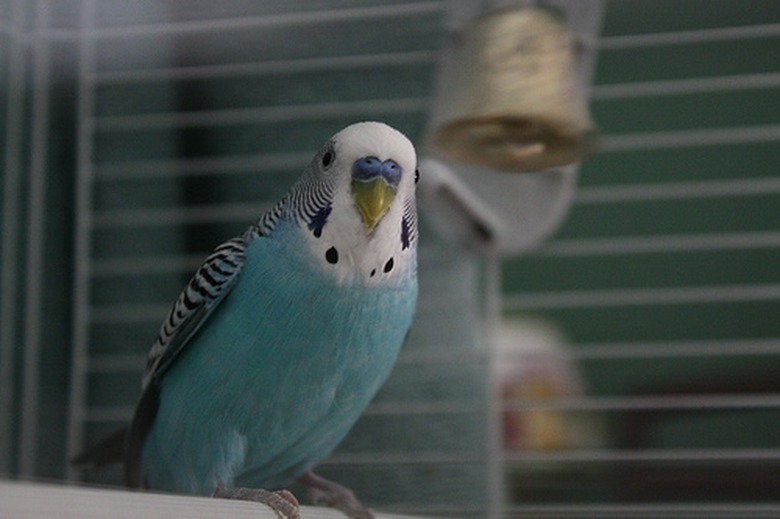Difference Between A Male And A Female Budgie
Native to central Australia, budgerigars, commonly known as parakeets or budgies, make fun-loving and social pets. The best way to tell male from female is by looking at a parakeets' cere — the fleshy nostril area above the bird's beak. At maturity, male budgies have a bluish cere, while females have a pinkish cere. Male and female budgies are nearly identical, so it can be all but impossible for an untrained eye to determine your avian friend's gender without having this handy information. Relying on male budgie behavior can sometimes help, but it isn't fool-proof.
Reasons to know budgie's gender
Reasons to know budgie's gender
Although both sexes make excellent pets, it's important for several reasons to know whether your budgie is male or female. Grouping males and females together could result in pairing off and unwanted breeding, which could make for quite a surprise if you aren't in the market for more birds. Also, there are personality differences and specialized health concerns that vary between the sexes.
Identifying parakeet gender by age
Identifying parakeet gender by age
Most male budgies will have a bright blue cere and most females will have a pink, white, tan, or brown cere. Budgies less than a year old that have not yet reached their first molt will have purplish ceres regardless of their gender, and those with unique or rare adult color variations may have differently colored ceres as well. If you want to know at what age can you tell a budgie's gender, it is pretty much impossible to distinguish between male and female budgerigars before 12 months of age. When all else fails, consult an avian veterinarian, who can surgically determine a budgie's sex by testing its chromosomes.
Look for personality cues
Look for personality cues
As with most species, budgies have their own unique personality. However, as a general rule, male budgie behavior features more head bobbing. Males are usually more outgoing and social, they sing more often, and they learn to talk more readily. Female parakeets, on the other hand, can be louder, tend to be bossy, and like to chew and gnaw more frequently. In the wild, female budgerigars gnaw holes in trees for nesting.
Budgie health concerns
Budgie health concerns
Budgerigars are generally hardy, healthy birds, but females run the risk of becoming "egg-bound," which happens when an egg gets stuck during the laying process.%20can%20occur.) This is a serious and life-threatening condition called dystocia. It requires immediate veterinary attention. Being egg-bound, and then having egg extraction by a veterinarian, is traumatic for the female budgie. Parakeet owners should be prepared for a poor outcome, including subsequent illness or even death.
Some budgies can be plagued with malnutrition, which is common in this aviary species due to improper feeding. A common issue is that seed hulls left behind after the bird has cracked them open appear to the untrained human eye as food. The human thinks the food bowl is full, and doesn't refill the bowl, in effect starving the bird. Parakeets' food bowls should be cleared of empty hulls and refilled at least once a day.
Parakeets need water, and they need to stay warm. Wild budgies' natural habitat in Australia gets really warm. and they migrate to warmer areas in the winter months. If they are in a home, in a birdcage, there is nowhere for them to escape cold temperatures. Keeping the home above 68 degrees Fahrenheit, and covering the cage at night, when air conditioning is running, or in winter, is ultimate.
Did you know?
Did you know?
Parakeets are naturally green in the wild but breeders have created almost every color and color combination imaginable including yellow, yellow and green, white, blue, albino, and even periwinkle.
